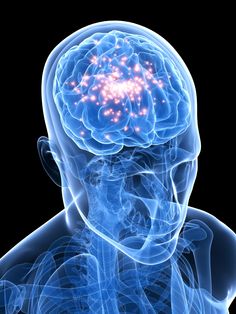In the realm of healthcare, the management of epilepsy has been a longstanding challenge due to the complex nature of the disorder and its impact on individuals’ daily lives. Traditional treatment approaches have relied heavily on medication and, in severe cases, surgical interventions. However, the landscape of seizure management is evolving rapidly with the integration of innovative technologies that offer promising solutions for improving patient outcomes and quality of life. From wearable devices for seizure detection to the application of artificial intelligence and telemedicine, this article delves into the latest advancements in seizure care and explores how these technologies are revolutionizing the way we approach and treat this neurological condition.
1. Introduction to Epilepsy Management
Understanding Epilepsy: Causes and Symptoms
Epilepsy is a neurological disorder characterized by unpredictable seizures. These seizures can vary from brief staring spells to convulsions and loss of consciousness.
Current Challenges in Epilepsy Treatment
Despite advances in medical science, managing seizure can be complex. Finding the right treatment that effectively controls seizures while minimizing side effects remains a challenge for many patients.
2. Traditional Treatment Approaches for Epilepsy
Medication-Based Therapies
Medication is often the first line of defense in treating epilepsy. Anti-seizure drugs can help control seizures in many patients, but finding the right medication and dosage is key.
Surgical Interventions for Epilepsy
For some individuals with drug-resistant epilepsy, surgery may be considered. Surgical interventions aim to remove the area of the brain responsible for triggering seizures or to disrupt the abnormal brain activity causing seizures.
3. Emerging Technologies in Epilepsy Management
Overview of Technology Integration in Epilepsy Care
Advancements in technology are transforming the landscape of epilepsy management. From wearable devices to innovative monitoring systems, technology is offering new ways to monitor and treat seizure more effectively.
4. Wearable Devices for Seizure Detection and Monitoring
Types of Wearable Devices
Wearable devices designed for epilepsy management come in various forms, such as smartwatches, wristbands, and patches. These devices are equipped with sensors to detect and record physiological changes associated with seizures.
Benefits and Limitations of Wearable Technology
Wearable devices provide continuous monitoring of seizures, offering real-time data to patients and caregivers. However, limitations such as accuracy, comfort, and cost effectiveness are challenges that need to be addressed for widespread adoption.# Innovative Technologies for seizure Management
5. Artificial Intelligence and Machine Learning in Epilepsy Care
Role of AI in Seizure Prediction
Artificial intelligence isn’t just about beating humans in chess; it’s also diving into the world of epilepsy management. AI algorithms can analyze patterns in brain activity to predict seizures before they happen – talk about a high-tech crystal ball!
Utilizing Machine Learning for Personalized Treatment Plans
Machine learning isn’t just for picking the next Netflix show for you. It can also analyze heaps of data to tailor treatment plans specifically to each seizure patient’s needs. It’s like having a virtual seizure whisperer guiding the way.
6. Telemedicine and Remote Monitoring for Epilepsy Patients
Advantages of Telemedicine in Epilepsy Management
Telemedicine isn’t just for avoiding waiting room germs – it’s a game-changer for epilepsy care. Patients can connect with their healthcare providers from the comfort of home, making managing seizure more convenient and accessible.
Remote Monitoring Tools and Applications
From tracking seizures to monitoring medication adherence, remote monitoring tools are the sidekicks every seizure warrior needs. They help healthcare providers stay in the loop and provide timely interventions, all while you chill on your couch in your PJs.
7. Neurostimulation Therapies for Epilepsy Control
Types of Neurostimulation Devices
Neurostimulation devices sound like something out of a sci-fi movie, but they’re real-life superheroes for seizure control. From vagus nerve stimulation to deep brain stimulation, these devices zap seizures away like a boss.
Efficacy and Considerations for Neurostimulation in Epilepsy
Thinking of diving into the world of neurostimulation for epilepsy? It’s important to consider factors like effectiveness, potential side effects, and lifestyle implications. But hey, a life with fewer seizures? Totally worth a little zap here and there.
8. Future Trends and Challenges in Epilepsy Management
Potential Innovations on the Horizon
The future of epilepsy management is looking bright with innovations like wearable seizure detectors, personalized medication delivery systems, and brain-computer interfaces. It’s like stepping into a futuristic seizure utopia – minus the flying cars.
Addressing Accessibility and Affordability in Epilepsy Care
As we journey into the future of seizure management, ensuring that these cutting-edge technologies are accessible and affordable for all patients is key. Because everyone deserves a shot at better seizure care, regardless of their zip code or bank account balance.As we navigate the ever-evolving landscape of seizure management, it is evident that technological advancements are reshaping the way healthcare professionals diagnose, treat, and support individuals living with seizure. From enhancing early detection to facilitating personalized care plans and expanding access to remote monitoring, these innovative technologies hold immense potential in improving the quality of life for patients and caregivers alike. Moving forward, continued research, collaboration, and investment in these cutting-edge solutions will be key in further advancing the field of seizure management and ultimately enhancing outcomes for those affected by this neurological condition.


